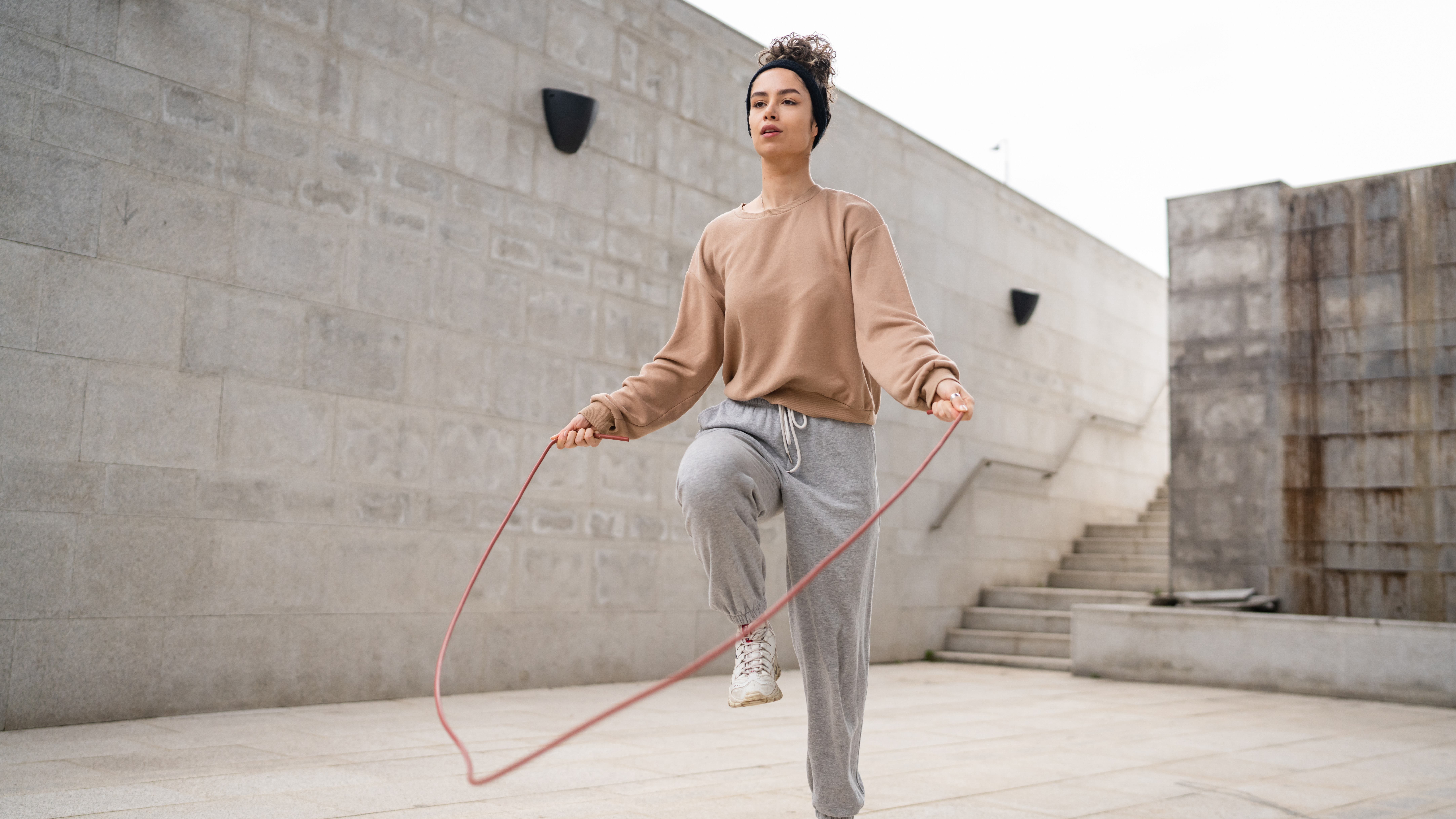
I’ve been prioritizing strength training recently, so my cardio workouts have fallen down the priority list. I wanted to shake things up with a fun new activity, rather than try the same old spin bike or running routines, so I decided to try skipping.
"Skipping every day can offer numerous benefits," says Tom Kolecki, a personal trainer at specialist training facility B O X R. "It burns a significant number of calories in a short amount of time and strengthens major muscle groups, especially in the legs, shoulders and core. It can also significantly improve heart health, stamina and overall cardiovascular endurance."
Like all exercise, it releases endorphins and boosts your mood, too. It's also cheap (you can grab a rope on Amazon for as little as $5.50) and you can do it anywhere.
Here’s how I got on, after skipping every day for a month.
It wasn’t easy at the start
When I first started the challenge, I was seriously out of practice I was. I hadn’t used a skipping rope since discovering @lauren.jumps on Instagram in the first lockdown, and it’s safe to say I was pretty rusty.
But by week two, I started to feel like I had a bit of a rhythm. I wasn't tripping over the rope as much and could finally string a decent number of jumps together without getting whipped.
It built a habit
Taking on the challenge was one thing, but remembering to actually skip was another. Because it wasn’t part of my workout routine before the month began, I had to keep my skipping rope in plain sight during the first week or so, to remember to get jumping for my daily skip.
I didn’t have a certain number of skips or minutes to complete so it was simply the act of doing it every day that I wanted to tick off. I ended up hooking my skipping session onto my daily workout and it soon became second nature.
The physical changes were noticeable
Regular skippers will be familiar with the calf burn, which I definitely felt, and the daily skipping contributed to the overall tone of my legs.
Skipping every day also had a positive effect on my other workouts, such as incline walks, which gradually became easier. Kolecki says that regular skipping builds stamina and overall endurance, benefiting other physical activities, so this makes sense.
Would I do this challenge again?
Skipping is a quick, convenient way to get your cardio fix, but halfway through the challenge I started to get bored. The exercise is repetitive and it’s difficult to make it more challenging. After experiencing the initial perks of stronger legs and improved cardio, my progress stalled.
I plan to skip occasionally when I want to take a break from work, but I don’t think it will be replacing my usual cardio workouts.







